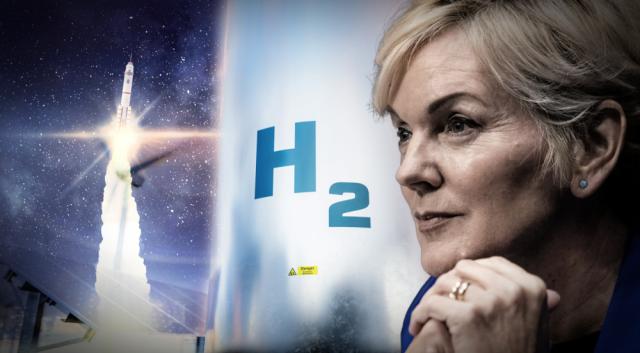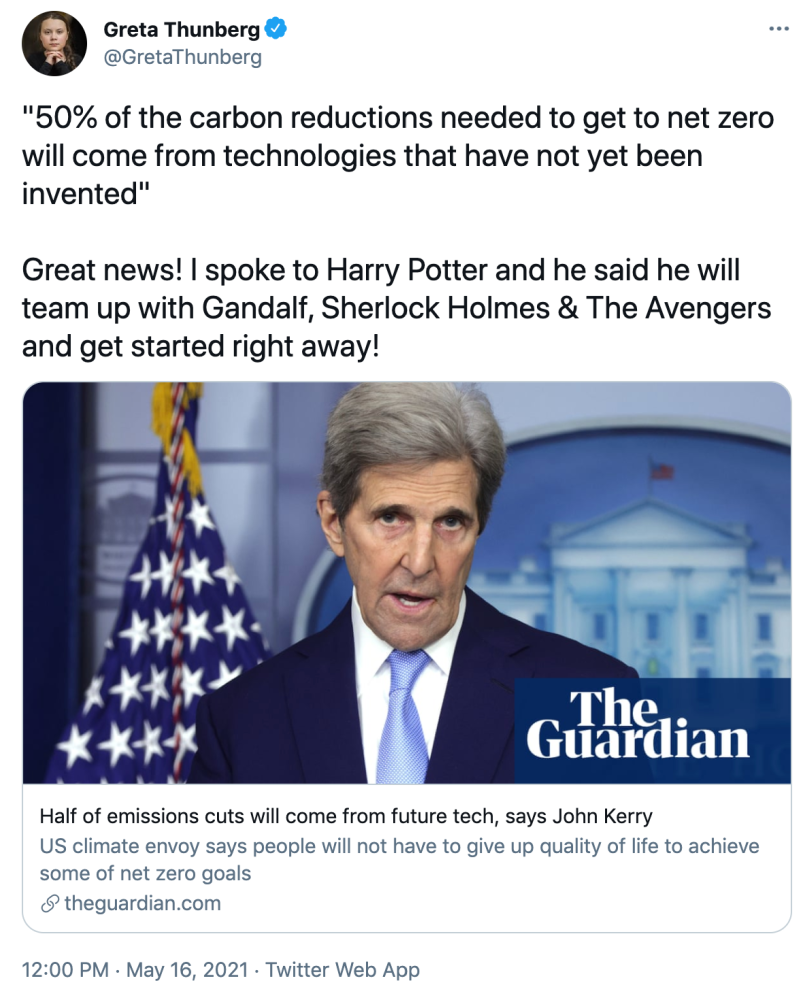
There has been a “paradigm shift” over the past 18 months, which will see green hydrogen emerge as a key element of the energy transition, says WoodMac analyst Ben Gallagher. (Source: Image of Jennifer Granholm by John Papadopoulos/Shutterstock.com ; Shutterstock.com)
Learn more about Hart Energy Conferences
Get our latest conference schedules, updates and insights straight to your inbox.
On her first day on the job, U.S. energy secretary Jennifer Granholm described her department as the U.S. government’s “in-house solutions powerhouse.”
It would be the U.S. Department of Energy (DOE), she said, that would lead the charge to reach a net-zero U.S. economy by 2050, by “developing and deploying the technologies that will deliver a clean energy revolution.”
This week Granholm tapped into that lofty ambition in launching “Hydrogen Shot,” the first of a series of initiatives aimed at driving breakthroughs in clean energy technologies over the next decade.
With “Hydrogen Shot,” the energy secretary wants to slash the cost of clean hydrogen—created from the electrolysis of water using renewable energy—by 80% to $1 per kilogram in the coming 10 years. At this level, it would be cheaper to produce hydrogen from renewables than it is to do so from natural gas.
“In order to keep developing a number of promising technologies we need to invest in R&D,” Granholm said June 9. “[And] clean hydrogen is a game-changer.”
Driving innovation and commercialization of new technologies is the most significant way the DOE—whose myriad responsibilities range from managing the U.S. nuclear weapons program to carrying out environmental clean-ups—can best contribute to the country’s newfound climate ambitions.
But betting big on technologies that are yet to be scaled or commercialized has faced backlash from some in the sector who see it as a risky bet that may not pay dividends in the fight against climate change for years—or ever. John Kerry, the president’s climate envoy, came under fire last month for what activists saw as too much optimism on new technologies’ role in achieving climate goals.
“Great news! I spoke to Harry Potter and he said he will team up with Gandalf, Sherlock Holmes & The Avengers and get started right away!” tweeted Greta Thunberg, the teenage Swedish activist, in response.

But analysts generally agree that while the ramp-up of renewables and the electrification of large swaths of the economy (especially transport) will contribute to significant near-term emissions reduction, the solutions to cleaning up so-called hard-to-decarbonize sectors like heavy industry are less clear cut. And more than half of the emissions that need to be eliminated to achieve a net-zero economy will have to come from technologies that are at a nascent stage today.
So while things like clean hydrogen, carbon capture and sequestration, direct air capture and renewable fuels may contribute much to cutting emissions in the near term, in the long run they will be critical.
“I think it’s pretty important to keep hydrogen on the agenda,” said Paul Bledsoe, strategic adviser at the Progressive Policy Institute, and a former climate adviser in the Clinton White House.
The DOE hopes that by cutting the costs of green hydrogen over the coming decade it can drive a fivefold increase in demand. Commercial interest in producing it is already on the rise.
Electrolyzer capacity for generating green hydrogen has rocketed in recent months. Until 2019, global capacity was just 200 megawatts, according to consultancy Wood Mackenzie. That has since jumped to 6.3 gigawatts (GW), with 1.3 GW added in the first quarter of this year alone.
There has been a “paradigm shift” over the past 18 months, which will see green hydrogen emerge as a key element of the energy transition, said Ben Gallagher, lead analyst for hydrogen and emerging technologies at WoodMac.
WoodMac estimates green hydrogen should be competitive with fossil fuels some time between 2028 and 2033 (assuming a $30/MWh power price in 2030).
Granholm’s department will be hoping to emulate the success of the SunShot initiative, which under the Obama administration helped slash the cost of utility-scale solar power by 75% between 2010 and 2017 to 6 cents per kilowatt-hour.
“We didn’t know that solar was going to get this cheap 20 years ago,” said Bledsoe. “You’ve got to keep [the clean hydrogen] option alive, it’s far too important.”
This article is an excerpt of Energy Source, a twice-weekly energy newsletter from the Financial Times.
Recommended Reading
TPG Adds Lebovitz as Head of Infrastructure for Climate Investing Platform
2024-02-07 - TPG Rise Climate was launched in 2021 to make investments across asset classes in climate solutions globally.
Air Products Sees $15B Hydrogen, Energy Transition Project Backlog
2024-02-07 - Pennsylvania-headquartered Air Products has eight hydrogen projects underway and is targeting an IRR of more than 10%.
NGL Growth Leads Enterprise Product Partners to Strong Fourth Quarter
2024-02-02 - Enterprise Product Partners executives are still waiting to receive final federal approval to go ahead with the company’s Sea Port Terminal Project.
Sherrill to Lead HEP’s Low Carbon Solutions Division
2024-02-06 - Richard Sherill will serve as president of Howard Energy Partners’ low carbon solutions division, while also serving on Talos Energy’s board.
Magnolia Appoints David Khani to Board
2024-02-08 - David Khani’s appointment to Magnolia Oil & Gas’ board as an independent director brings the board’s size to eight members.





